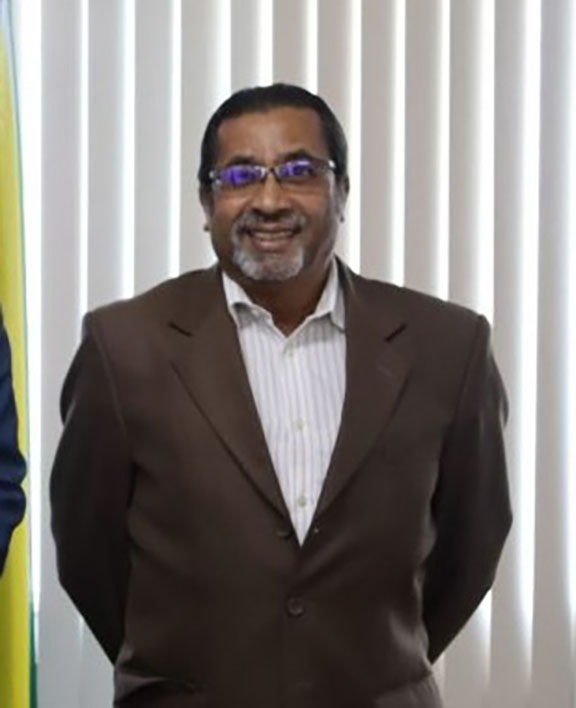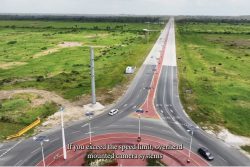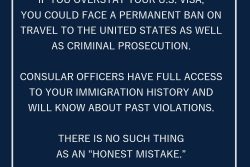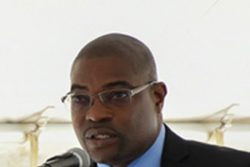By Neville J. Bissember
On “The Late Show with Stephen Colbert” earlier this month, former US Transportation Secretary Pete Buttigieg was asked what is the current state of US Foreign Policy. He immediately responded, ‘Upside down’. Explaining that it was not an ‘abstract academic theory [but] one of the basic ideas of foreign policy is, you fight your enemies and you help your friends’. Referencing Canada and Russia, which he termed ‘friend’ and ‘adversary’ respectively, he said President Trump was ‘fighting Canada and helping Russia’: hence upside down.
Now before the Trump lovers “come fuh me”, let me say the following: first off, don’t shoot the messenger; second, in the words of new State Department spokeswoman Tammy Bruce, ‘there’s a lot of new things that the world is hearing from a new administration….’ Over in Europe, there is acknowledgment about ‘just how much the world has changed with the arrival of Trump’.
Regarding the above, Secretary Buttigieg in his explanation used a straightforward principle of Foreign Policy 101, which should be acceptable to all reasonable men and women; and perhaps more importantly, he made it clear that he was speaking as a private citizen, enjoying his new life like any average Pete. In any event it was certainly before rumours started to intensify that Buttigieg might be seeking the Democratic nomination for President, come 2028; in other words, his comments could be regarded as objective and non-partisan.
In addition to import tariffs and the war in Ukraine, where the US now finds itself voting with Russia and other strange bedfellows like North Korea, Sudan and Belarus at the UN – what the BBC termed ‘a change of stance on the war’ – there are other noticeable policy shifts, some more predictable than others. It was well known that President Trump would once again “unsign” the watershed 2016 Paris Agreement on Climate Change and call for changes to the European security arrangements through NATO, especially as regards financing the organisation and its role in Ukraine. In other changes, the US has withdrawn from the WHO, the UN Human Rights Council and shuttered USAID.
One school of thought would uphold these actions as the sovereign right of a government to determine its foreign policy priorities, especially where its taxpayers’ money is involved. They might therefore find fault with Mr. Buttigieg’s “upside down” analysis. On the other hand, critics of the new departures adopted by the Trump 2.0 administration would argue that it diminishes the role that the US has traditionally played in world politics and policy- making and its often-stated commitment to the maintenance of international peace and security.
As a small (not tiny, as the western media often refers to us) developing country on the cusp of great things economically, Guyana ought to be concerned like many other nation-states, about what the realignment of US foreign policy portends. While Guyana’s number one foreign policy priority has always been the protection and preservation of our sovereignty and territorial integrity, the global oil and gas market would probably bring a close second, in the current scheme of things. Hence, any novel positions or departures from the norm in the area of acquisition of territory that President Trump and Secretary of State Marco Rubio adopt, would have to be analysed. The intention would be to identify any conclusions that could reasonably be drawn, as being relevant to our own territorial controversy with Venezuela and the consequences for our maritime spaces offshore, as well as the dispute in the New River Triangle pursued by Suriname
And indeed there are some noteworthy illustrations, to wit: Canada and its border delimitation with the US; Greenland; the conflict in the Ukraine; and Gaza (in the Middle East, not Mozambique!).
To its North, President Trump has been referring to Canada as the 51st state and to former Prime Minister Justin Trudeau as “Governor” and calling into question treaty arrangements that delimit the border between the US and Canada. From as far back as 1846, when a treaty between the US and the UK (on behalf of Canada) established the 49th parallel as the border between the US and Canada, another 1908 treaty between the two parties more clearly defined the international boundary between the two countries.
Further North, thousands of miles and hours away by plane from the US lies Greenland, an island territory proximate to the North American continent, but politically an autonomous territory of Denmark; the inhabitants of Greenland are citizens of Denmark. President Trump has repeatedly stated his intention to acquire the island either by way of a financial transaction or by military force. The motivation is essentially strategic, but that has many dimensions – military, commercial and economic.
In the Ukraine war, the new Trump administration has apparently aligned itself with the Kremlin’s views, particularly as regards Russia’s right to control four regions of Ukraine that were annexed in the fall of 2022, following its invasion of Ukraine in February of the same year. Steve Witkoff, President Trump’s special envoy and lead negotiator on the Ukraine, suggested last week that as regards these four regions, Russia had a right to them.
It would seem that a sweetener in any deal to end the war would be the US’s access to Ukraine’s rare earth minerals, which some might regard as a kind of economic and security guarantee for Ukraine. In any event this transactional arrangement has apparently increasingly assumed importance, over and above that country’s territorial integrity or its membership of NATO – what President Putin regards as “the root causes of the war”.
As regards the Gaza Strip in the Middle East, in what has been described as ‘the biggest shift in US policy on the Middle east in decades’, President Trump has said that the US could ‘take over’ and ‘own’ Gaza, a landmass about 7,000 miles away, with no history of occupation or ownership by the US upon which a territorial claim could be based. With language similar to Secretary Buttigieg, the BBC says the proposal could ‘…upend the international consensus on a Palestinian state comprising Gaza and the occupied West Bank’.
The plan envisages Gaza being handed over to the US by Israel, the Palestinians being relocated to Egypt and Jordan (as they already were in 1948 when the state of Israel was created) and the clearing of the wartime rubble and construction of a Middle East Riviera. The plan has received widespread condemnation in the Arab world, including from Egypt and Jordan.
In all of the forgoing examples, one recurring feature is the unilateral nature of the plans put forward by the new Trump administration. Hence it is relatively difficult to assess or predict the outcomes for these initiatives, especially as the usual principles upon which foreign relations are conducted, appear to have been given a back seat.
Regarding the proposed acquisition of territory, be it in Canada, Greenland, as regards the 1600 square miles of Ukrainian territory that Russia captured during the war, or Gaza in the Middle East, the legal basis upon which any of these proposed acquisitions is being made is doubtful. Moreover, they could create unsettling precedent, as well as encouragement for other similar territorial acquisitions elsewhere, which are similarly not tethered to the principles of international law.
What then would be the basis for re-opening the 1908 Canada-US Border Treaty? Could it possibly be that the Trump administration has come to the rescue of the native Indian tribes who claim that they were not consulted centuries ago when the decision was taken to make the 49th parallel the boundary between the two countries? How similar would this be to re-opening of the 1899 Arbitral Award and the 1905 Agreement that established the border between British Guiana and Venezuela?
It is a well-accepted principle regarding sovereignty over territory that wherever there are populations living in the disputed territory, they should be afforded the right to self-determination, in order to decide under which authority they wish to be governed. In the examples available – The Falkland Islands, East Timor, South Sudan – the question was put to the residents and in the case of the latter two, under UN supervision.
Already, in Canada, Greenland and Gaza, even before any serious attempt at territorial acquisition is being made by the United States, there have been forceful objections to any annexation by the residents of these countries. This was similarly the case with the Venezuelan referendum in December 2023 regarding the Essequibo. It should be noted that Venezuela took the novel position of holding a referendum on the Essequibo outside of the Essequibo, in the process canvassing persons who do not live there!
So if from Guyana’s national strategic and foreign policy perspective, the preservation of our sovereignty and territorial integrity and the maintenance of our development trajectory via the exploitation of our oil and gas resources by US commercial interests are our primary concerns, where does Guyana stand as regards its relations with the US.
I had previously asked the question whether the US, in its statement on 1 March 2025 issued by the faceless Bureau of Western Hemispheric Affairs, was threatening Venezuela with ‘consequences’ primarily in defence of Guyana’s sovereign rights over its maritime space, or moreso in defence of property operated by subsidiaries of a major US multinational. That statement first referenced the threat to ExxonMobil’s FPSO, before the violation of Guyana’s maritime territory. The backdrop for my enquiry was the difference I discerned between the US Ambassador’s statement that the US ‘…will always stand shoulder to shoulder with Guyana…’ and the more cautious one of the NSC spokesman reiterating calls for a ‘peaceful resolution’, as the US ‘…obviously [doesn’t] want to see any violence or conflict occur’.
By way of analogy with the war in Ukraine, notwithstanding the recent changing dynamics in US foreign policy, when President Zelensky sought security guarantees from the US as part of a settlement, the response was that ‘the presence of US mining firms and workers would be deterrent enough’. Does this position hold true for Guyana as well, as regards the on-going presence here and economic interest of a major US multinational?
Does it matter that the extractive activity in our oil sector is taking place 100 miles offshore, far removed from life on the land territory? If an incursion from our neighbour to the West was to take place in the Essequibo, far away from where US economic interests are being pursued offshore, would there also be ‘consequences’, or the same type of consequences, including ‘standing shoulder to shoulder’ with us?
In the State Department readout on Secretary Rubio’s visit to the Region, Latin America Special Envoy Mauricio Claver-Carone, said that ‘[T]he security of Guyana is a key priority for [the US]…’. However by my estimation, that assurance was made in the context of regional security cooperation; hopefully Secretary Rubio will bring some clarity to the national dimension of security, if only in his private conversations with President Ali.
In the bilateral discussions that will be held with select CARICOM Heads, both sides will have their respective “shopping lists”. In this regard, it is good that the discussions will be on an individual country basis – the former Trump Administration never met with CARICOM at Summit level as a group – so that country-specific issues could be raised. On our side, our territorial sovereignty will be paramount, so whatever clear assurances we can get of the US ‘standing shoulder to shoulder’ with us would be welcome, whether or not US assets and personnel are threatened. Whatever financial and technical support would be forthcoming for our continued economic transformation through the oil and gas sector would also be most welcome.
From the US side, the concern over the presence of Cuban nationals in Guyana has to be clearly distinguished between the two separate immigration streams, that is, the human trafficking of economic migrants who are transiting Guyana on the way to third countries, as opposed to the more institutionalized work that is carried out for mutual benefit by the Cuban medical brigade. The latter, absent the pejorative label of “white-robe human trafficking”, needs to be sustained for its positive impact through their ‘great’ contribution to the quality of health care in CARICOM Member States. As Mr. Claver-Carone said, the entire conversation should not be wasted on the Cuban doctors and the US and CARICOM can agree to disagree and move on.
From the US side also their interest in collaboration on CARICOM’s energy security is a low-hanging fruit that we should grasp. Reading between the lines of what Mr. Claver-Carone said, a collaboration in the oil and gas sector between Guyana and Suriname could evolve as a counterpoint to the lop-sided energy dependency that exists as a result of the Venezuelan PetroCaribe arrangement. In the fullness of time, with US support, we could welcome a CARICOM Energy Facility to bring down the restrictive cost of energy that constricts production and manufacturing in the Member States, with the obvious exception of Trinidad and Tobago.
It is also the case that the issue of returning migrants, and hemispheric security from the point of view of trafficking in all its forms, will appear on the US’ list.
It is a pity that Secretary Rubio would not be able to experience a visit to the majestic Kaieteur Falls on his shuttle diplomacy, but both sides have more important things to discuss: Guyana needs as a takeaway from this encounter, a clear explanation that the shifts in US foreign policy elsewhere will not negatively impact our bilateral relations and Guyana’s national security and development priorities, specifically as regards the Guyana-Venezuela territorial controversy and our oil and gas sector. Secretary Rubio would be most welcome to visit Kaieteur on his next visit.










